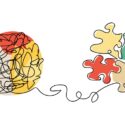
Intersectionality is one of the most important ways to help support diversity, inclusion and equity, explain Thom Dennis and Gamal Turawa
Intersectionality relates to how different parts of our identity merge and how this influences our interactions with the world, as well as how the world interacts with us. Our age, race, class, ethnicity, gender, sexual orientation, as well as other social factors related to work and home life are often used to define us, but these and other labels continue to increase discrimination and to divide us.
Everyone’s identity is multifaceted.
Thom Dennis
I am a man, white, a grandfather, a survivor of abuse, a son, a leadership facilitator and an ex-Marine amongst many other things, and intersectionality encompasses all of these identities. Society creates definitions in an attempt to compartmentalise to satisfy a need for order and simplicity, but this can actually make people feel even more like outsiders, especially if they fall into a marginalised category. You don’t describe a white person as white, so why do we describe someone as black? We don’t describe a straight person as straight, so why are people labelled gay? Because they don’t fit our normalised (and largely unconscious) thinking.
Gamal “G” Turawa
I was born in the early sixties to an authoritarian Nigerian father and a Jamaican mother but fostered by a white middle class family in Kent. Later in life I joined the police and came out as the UK’s first openly gay black police officer. These multiple marginalised identities could contribute to how I identify myself; I could just be a survivor of being in a minority rather than a thriver, for example. Worse still, these identities also impact how people define me.
People assign a label to you or put a cross next to a box to describe you before you even open your mouth. When you cross several boxes, you become difficult to manage because people aren’t sure what to do with you. This opens up ways for people to suffer multiple levels of discrimination. For instance, I felt I was not openly able to say I’m black and gay for forty years because I was scared about how people would react and the impact it might have. We are multi-layered and complex, and categorising people as ‘this’ or ‘that’ means we miss out on the richness of who they are.
Why Is Labelling at Work Still Such a Problem?
Labelling and a lack of awareness of intersectionality is at the root of many conflicts, prejudices, and lack of inclusion at work. I (Thom) urge businesses to look at employees as unique individuals and to divert from a ‘one size fits all’ or a ‘box ticking’ mentality. Putting employees in specific boxes can lead to them missing opportunities or not being considered for them because it is believed that they do not fit the right mould.
As labelling and discrimination continue to persist in the workplace, what can business do to make a difference? Here are some of G and my suggestions for ways businesses can un-label:
Promote individuality
Embrace unique attributes and understand differences in race, gender, ethnicity, sexual orientation, age, physical abilities, religion, socio-economic status, etc., but know that none of those things define us. We all just want to be comfortable being ourselves.
Think about Insider / Outsider dynamics
Systematically and systemically address unconscious biases and accept that identity is complex. Managers should dissolve pre-wired thinking about who is in our tribe and who is not, and instead celebrate and value differences without the need for labels. Seeing people as unique and that one size doesn’t fit all really helps. Clamping down on outsider-ism and offering opportunities to all is key, even when interacting socially at work.
When you know you don’t know, stop making assumptions
Be curious, not judgemental and don’t make assumptions. It’s okay to ask questions about someone’s identity if you are coming from a genuine place. Stay curious and courageous and keep the conversations going. Training and open conversations help to educate us. Openly verbalise your intention that you want to understand better.
It’s not about quick solutions, it’s about progression
While it’s good to have some solutions on hand to help maintain and celebrate diversity in the workplace, we know from the ongoing pandemic that anything can happen to throw all plans out of kilter. Focus on the progression you are making rather than how to fix the problem quickly by applying a plaster. It’s about being able to evolve with openness, transparency, long-term thinking and application.
Recognise that negative feelings are part of the process
Feelings of fear, shame, anger, frustration and embarrassment are all part of the process, and avoiding them stunts individual and company growth. Recognise and sit with these feelings rather than bottling them up and use the experience for learning and development.
Think outside the box
Diversity and inclusion policies encourage collecting employee data related to social factors such as race, ethnicity, gender, etc. Whilst this is an effective method for interpreting the diversity of a company overall, it is important not to get fixated on these labels. When we use such data to understand an individual employee, it takes away from who they are and limits our vision.
Leaders must model positive behaviour
People emulate the behaviours of those they admire, so leaders need to model by encouraging open, inclusive and curious behaviour, rather than box ticking and labelling others. Demonstrate to others that it is safe to be vulnerable by opening yourself up about any prejudices you have faced during your time in business.
Be a whistle-blower if necessary
Don’t be afraid to call out marginalising behaviours. Be an agent of change and use your voice to do so – sitting on the fence is not a neutral position; it’s actually condoning and colluding with the bad behaviour. Addressing wrongdoings and encouraging honesty amongst employees helps to cultivate a safe space for everyone to work and communicate in harmony.
Refrain from judgement
It is okay to get it wrong and learn from it. If we feel judged, then we are less likely to speak out and be curious. Listen and speak to people who are feeling trapped by labelling; engage in courageous conversations to build trust, understanding and empathy and then be actively part of positive changes.
Get to know your team and show you care
Actively listen to their stories, be empathetic, and show care for them and their wellbeing. This will break down any barriers, so we move from being labels or names on a screen to friends and colleagues, each with their own story to tell.
Avoid stereotyping
Understanding, accepting and embracing people’s differences by choosing not to acknowledge or label them will reduce stereotyping. Stereotyping can be unconscious (known as an unconscious bias), whereby we type-cast because of assumptions or generalisations about someone which relate to their differences from others. Check yourself and your team for unconscious biases by encouraging self-awareness and choosing not to label others.
Promote inclusion
Inclusion creates space for us to gain awareness, educate, integrate and evolve. It brings society together and unites a range of perspectives, encourages diversity and equality and promotes harmony and unity.
Conclusion
In short, create a healthier workplace culture. A workplace lacking inclusion and rife with marginalisation or labelling can impede employee wellbeing, evoking feelings of anxiety, anger and injustice, whereas inclusive cultures which do not label have happier, healthier and more productive and creative workers.
…and a final word from “G”
Companies need to celebrate the rich and diverse talent they have within their team. That richness is a gift. Although no one should have to experience prejudice, experiencing adversity means you have had the opportunity to feel and gain unique knowledge.













